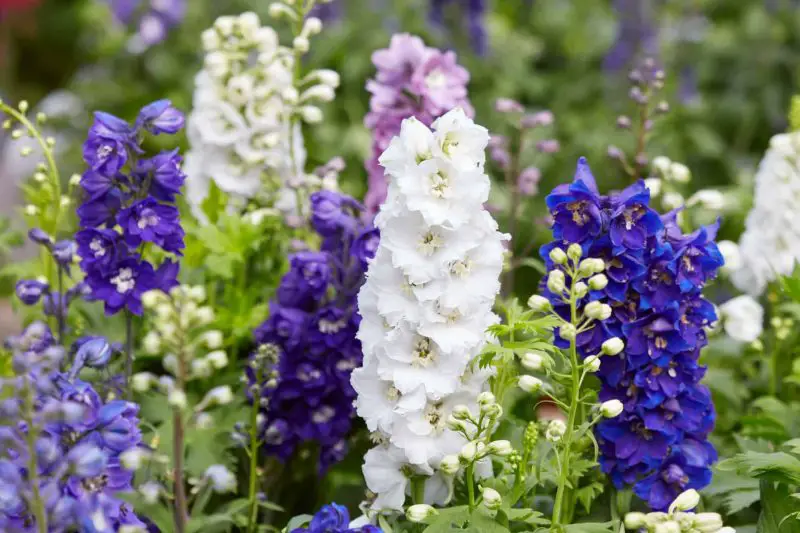Snapdragons are cherished for their vibrant colors and unique, tall flower spikes. They add texture and visual interest to any garden. However, without proper pruning, these plants can become leggy, produce fewer blooms, and lose their aesthetic appeal. Pruning is essential to stimulate new growth, maintain plant health, and extend the flowering season. Understanding the right techniques and timing is key for gardeners seeking maximum flower production from snapdragons.
Pruning is more than just cutting back old flowers. It involves removing spent blooms, shaping the plant, and encouraging bushier growth. Correct pruning prevents disease, improves air circulation, and enhances the overall structure of the plant. By mastering these techniques, gardeners can enjoy continuous blooms, stronger stems, and healthier foliage. This guide provides expert tips and step-by-step advice on how to prune snapdragons effectively, whether grown in garden beds, borders, or containers. Proper pruning ensures long-lasting beauty and a more productive flowering season.
Understanding Snapdragon Growth and Blooming

Snapdragons grow through distinct stages that directly affect pruning and bloom production. Initially, seedlings focus on root and leaf development. At this stage, minimal pruning is necessary, allowing roots to establish a strong foundation. Healthy roots help plants absorb water and nutrients efficiently. This early care supports upright stems and prepares plants for abundant flower spikes later in the season. Observing seedlings closely ensures they develop evenly and avoid weak, leggy growth.
As snapdragons mature, stems elongate, leaves spread, and flower buds begin to form at the stem tips. This pre-bloom phase is critical for planning pruning. Removing weak or overcrowded stems improves air circulation and prevents disease. Proper pruning during this stage shapes the plant, encouraging a fuller, bushier appearance. Monitoring growth patterns helps gardeners anticipate where blooms will appear and ensures resources are directed to the healthiest stems. Maintaining strong structure at this phase supports longer-lasting and more vibrant flowers throughout the season.
During the flowering stage, snapdragons produce tall spikes adorned with multiple blossoms. Environmental factors, including sunlight, temperature, and soil quality, greatly influence bloom duration and quality. Full sun for at least six hours daily promotes vigorous flowering, while well-draining, nutrient-rich soil enhances root development and supports bud formation. Consistent watering, avoiding both dryness and waterlogging, ensures flowers reach their full potential. By understanding these growth stages and environmental influences, gardeners can prune strategically, encourage secondary blooms, and maximize flower production, resulting in healthy plants with continuous, long-lasting displays.
When to Prune Snapdragons for Best Results
Pruning snapdragons at the right time is essential for promoting healthy growth and maximizing flower production. The first pruning should occur in early spring when new growth starts to emerge. Removing dead or damaged stems helps redirect energy to healthy shoots and encourages strong, upright growth. Gardeners should avoid cutting too early, as tender new growth may be harmed by late frosts. Early spring pruning also allows for better air circulation, reducing the risk of fungal infections.
During the flowering season, light pruning is recommended to remove spent blooms. Deadheading encourages secondary flowering and maintains a neat, compact plant structure. Regular inspection during pruning ensures that diseased or weak stems are removed promptly, preventing them from affecting surrounding healthy growth. Seasonal pruning also stimulates lateral branching, resulting in denser, more abundant flower spikes. Gardeners who prune at the right time see longer-lasting blooms and stronger overall plant health.
Late-season pruning, after the final bloom, helps prepare snapdragons for winter and encourages vigorous regrowth in the following season. Cutting back stems slightly and removing any damaged or diseased tissue preserves energy within the roots. Combining timely pruning with proper fertilization and watering ensures plants remain healthy, resilient, and ready for early spring growth. Understanding when to prune snapdragons is key to achieving optimal flowering and maintaining a vibrant, long-lasting display throughout the garden.
Benefit of Pruning Snapdragons
Pruning snapdragons offers several benefits that improve both plant health and flower production. Removing dead or damaged stems prevents disease spread and allows the plant to focus energy on producing new growth. Proper pruning encourages stronger, more upright stems, which support larger and more vibrant flower spikes. Gardeners who maintain regular pruning schedules enjoy healthier plants and more visually appealing garden displays.
Another key benefit of pruning is extended bloom duration. Deadheading spent flowers redirects energy into producing new blooms, resulting in continuous flowering throughout the season. Pruning also improves air circulation and light penetration within the plant canopy, reducing fungal risks and promoting overall plant vigor. Stronger stems and lateral branching enhance the density and volume of flowers, creating fuller, more colorful displays.
Pruning also helps maintain plant size and shape, ensuring snapdragons remain manageable in garden beds and containers. Well-pruned plants are less likely to become leggy or overcrowded, which reduces competition for nutrients and light. Combined with proper watering, fertilization, and pest management, pruning maximizes snapdragon potential, resulting in longer-lasting flowers, improved health, and stronger, more resilient plants. Gardeners who understand and apply pruning techniques consistently see vibrant, abundant blooms and a thriving garden throughout the growing season.
Choosing the Right Tools for Pruning Snapdragons
Using the correct pruning tools is essential for maintaining healthy snapdragons and promoting strong flower growth. Sharp, clean shears or scissors help remove dead, damaged, or diseased stems without crushing plant tissue. Using dull or dirty tools can create ragged cuts that allow pathogens to enter, increasing the risk of fungal and bacterial infections. Proper tools also make pruning more efficient, saving time and effort while protecting the plant.
Different types of snapdragons may require specialized tools. Taller varieties with multiple flower spikes may benefit from long-handled pruners or garden knives to reach higher stems without damaging surrounding blooms. It is important to sterilize tools between cuts, especially when working on multiple plants, to prevent disease spread. Gardeners should also keep tools sharp, as precision cuts heal faster and encourage new growth. Using appropriate equipment combined with correct pruning techniques ensures plants remain vigorous and bloom abundantly.
Investing in quality pruning tools not only improves efficiency but also enhances the overall health of snapdragons. Correct cuts stimulate lateral branching, prevent stem breakage, and promote more dense flower production. When tools are properly maintained and used carefully, snapdragons recover quickly and maintain long-lasting blooms. This attention to pruning equipment supports a thriving garden, reduces plant stress, and maximizes aesthetic appeal, making it easier to enjoy continuous, colorful displays throughout the growing season.
Pruning Basics for Snapdragons
Pruning snapdragons is essential for maintaining plant health and maximizing flower production. Proper pruning encourages bushier growth, prevents overcrowding, and improves air circulation around stems. Removing weak, damaged, or diseased stems early ensures the plant focuses energy on producing vibrant, healthy blooms. Using clean, sharp tools reduces the risk of introducing pathogens. Gardeners should regularly inspect plants for signs of stress, such as yellowing leaves or wilting stems, to determine which areas need pruning. Early intervention helps maintain structural integrity and prevents pest infestations or fungal issues.
Timing is critical when pruning snapdragons. Early-season pruning focuses on shaping the plant and removing weak stems before buds fully form, setting the foundation for a productive flowering season. During the flowering period, deadheading spent blooms stimulates secondary flower production and encourages more compact growth. End-of-season pruning prepares the plant for cooler months, reduces the risk of disease, and encourages stronger growth in the following year. Observing growth patterns ensures pruning is strategic, targeting stems that benefit the plant most while preserving energy for continuous flowering. Proper timing enhances the plant’s overall structure, supports long-lasting blooms, and maintains vibrant color.
Techniques for effective pruning include pinching back young shoots, removing faded flowers, and trimming overly tall or leggy stems. Pinching encourages lateral growth and fuller plants, while removing old flowers prevents seed formation and redirects energy to new blooms. Trimming tall stems maintains visual balance, prevents breakage in windy conditions, and ensures even light exposure. Gardeners who combine these methods can maintain healthy, productive snapdragons. Strategic pruning enhances bloom density, prolongs flowering, and keeps plants compact, vigorous, and visually appealing, creating a long-lasting, colorful garden display throughout the season.
Deadheading Snapdragons for Continuous Blooming
Deadheading is a crucial practice for maintaining vibrant snapdragon blooms throughout the season. Removing spent flowers prevents the plant from diverting energy to seed production. By cutting back faded blooms, the plant focuses on developing new buds and extending the flowering period. Consistent deadheading keeps plants looking tidy, encourages bushier growth, and promotes stronger stems, which support heavier flower spikes. Gardeners should inspect plants regularly and remove wilted flowers promptly to maximize bloom potential.
Proper deadheading techniques involve using clean fingers or sharp scissors to pinch or cut spent flowers just above the first set of healthy leaves. This approach encourages lateral growth and ensures the plant retains energy for continuous flowering. Deadheading also improves air circulation around remaining buds, reducing the risk of fungal diseases. Regular removal of old flowers prevents decay, which can attract pests and damage nearby healthy tissues. Maintaining this habit supports both aesthetic appeal and overall plant health.
Timing and frequency are essential for effective deadheading. During peak bloom, weekly inspection and removal of faded flowers are recommended. For taller varieties, trimming along the stem ensures uniform growth and prevents leggy development. Combining deadheading with proper pruning, watering, and fertilization encourages a long-lasting bloom cycle. Gardeners who consistently deadhead snapdragons enjoy extended color, denser flowering, and healthier plants. Strategic deadheading ensures snapdragons remain a vibrant and reliable focal point in any garden throughout the growing season.
Seasonal Care for Snapdragons
Spring Care
Spring is the most critical season for snapdragon growth. As temperatures warm, plants resume active growth. Gardeners should prepare the soil by adding compost, organic fertilizer, or slow-release nutrients to strengthen roots and support healthy stems. Inspect plants for winter damage, remove dead leaves, and stake weak stems to support early flower spikes. Mulching helps retain moisture, reduce weed growth, and regulate soil temperature, creating ideal conditions for robust spring development.
Pruning in early spring focuses on shaping the plant and removing weak or overcrowded stems. Consistent watering ensures soil stays moist without waterlogging, which can harm roots. Regular inspection helps detect pests or fungal problems early, preventing serious damage. Applying light fertilization encourages bud formation and stronger stems. Proper spring care establishes a solid foundation for abundant blooms, long-lasting flowers, and vigorous plant growth throughout the season. Healthy early growth prepares snapdragons for summer heat while maximizing flowering potential.
Summer Care
During hot summer months, snapdragons need careful attention to prevent heat stress and maintain flowering. Deep watering at the base ensures roots receive moisture while reducing fungal risks on foliage. High temperatures may cause blooms to fade quickly, making deadheading essential to encourage secondary flowers and prolong color display. Shade can be provided during peak afternoon heat for sensitive varieties.
Fertilization every four to six weeks with a balanced formula supports ongoing growth, strengthens stems, and enhances flower production. Regular inspection for pests like aphids, spider mites, and caterpillars allows for timely intervention. Mulching helps conserve moisture and regulate soil temperature. Proper summer care ensures snapdragons remain healthy, vibrant, and productive despite environmental stress. Gardeners can enjoy long-lasting blooms, denser flower spikes, and stronger, more resilient plants throughout the season.
Fall Care
In fall, snapdragons benefit from reduced pruning to allow flowers to mature fully. Deadheading spent blooms continues to stimulate new flowers while preserving plant energy. Cooler temperatures often encourage a second flowering cycle before winter dormancy. Preparing the soil with compost or aged mulch enriches nutrients, improves drainage, and protects roots from sudden temperature drops.
Late-season fertilization should be minimal to avoid tender growth that frost could damage. Monitoring for pests and disease remains important, removing infected foliage promptly. Supporting plants with staking or light pruning ensures stems remain upright and flowers are well-exposed. Fall care keeps snapdragons strong, resilient, and visually appealing. Healthy plants entering winter are more likely to survive and produce abundant blooms the following spring, extending garden beauty.
Winter Care
Winter care focuses on protecting snapdragons from frost, cold, and fluctuating temperatures. Apply a thick layer of mulch around the base to insulate roots and maintain soil stability. In regions with harsh winters, cover plants with frost cloth or bring container-grown snapdragons indoors. Avoid overwatering, as excess moisture can cause root rot. Remove dead foliage carefully to reduce pest or fungal risk.
Pruning should be minimal, limited to removing dead, damaged, or diseased stems. Maintaining airflow while preventing frost exposure is key. Regular inspection during winter helps gardeners identify damage early and take corrective action. Proper winter care ensures plants survive until spring, preserving healthy roots and strong stems for vigorous growth. This preparation supports early spring blooms and maximizes flower production in the upcoming season, maintaining the garden’s vibrancy year after year.
Common Mistakes to Avoid
Overwatering Snapdragons
Overwatering is one of the most frequent mistakes gardeners make when growing snapdragons. Excess water saturates the soil, reducing oxygen availability for roots and limiting nutrient uptake. Waterlogged soil encourages root rot, yellowing leaves, soft stems, and stunted growth. Gardeners should always monitor soil moisture and water only when the top inch feels dry. Using well-draining soil or pots with drainage holes prevents standing water and promotes healthier root systems.
Deep watering at the base encourages strong, deep roots and prevents shallow, weak growth. Mulching helps retain moisture, reduces evaporation, and stabilizes soil temperature. Avoid overhead watering, which increases fungal risk on leaves and flowers. Proper watering ensures stronger stems, continuous blooms, and improved resilience during heat or drought. Understanding and adjusting to environmental conditions, including rainfall and temperature, allows gardeners to maintain optimal moisture levels. Well-watered snapdragons produce abundant flowers, resist pests, and remain visually appealing throughout the season.
Neglecting Deadheading
Neglecting deadheading is another common mistake that significantly reduces flowering. When faded blooms are left on the plant, snapdragons divert energy to seed formation rather than producing new buds. This leads to fewer flowers, leggy stems, and a less attractive plant. Gardeners should remove old flowers above the first healthy leaf or lateral bud to stimulate continuous blooming and encourage compact growth.
Deadheading also improves air circulation around the stems, reducing fungal risks and minimizing pest infestations. Regular removal of spent blooms works together with pruning and fertilization to maintain plant energy for maximum flower production. Plants that are routinely deadheaded grow bushier, stronger, and more vibrant. This practice prolongs the blooming period, enhances flower density, and maintains aesthetic appeal throughout the growing season. Gardeners who skip deadheading often face reduced color, weak stems, and shorter flowering cycles, limiting the overall impact of snapdragons in the garden.
Ignoring Sunlight Requirements
Snapdragons need at least six hours of direct sunlight each day to thrive and produce vibrant flowers. Planting them in shaded areas causes elongated stems, sparse blooms, and weak plant structure. Sunlight drives photosynthesis, providing energy for bud formation and continuous flowering. Gardeners should evaluate light patterns in the garden before planting to ensure optimal growth conditions for snapdragons.
For container-grown plants, moving pots to sunnier locations during peak flowering periods improves bloom density and overall plant vigor. Insufficient sunlight weakens stems, reduces leaf health, and makes plants more prone to pests and disease. Adequate sunlight encourages compact growth, stronger stems, and more vibrant blooms. Addressing light deficiencies early ensures snapdragons reach their full potential, resulting in healthier plants, longer-lasting flowers, and visually striking garden displays throughout the growing season. Gardeners who ignore sunlight requirements often experience poor flowering and leggy, weak plants.
Planting in Poor Soil
Snapdragons can struggle significantly if planted in poor soil conditions. Heavy clay soils retain excess water, suffocating roots and promoting fungal growth. Sandy soils, by contrast, drain too quickly, leaving roots dry and limiting nutrient absorption. Both extremes weaken stems, stunt growth, and reduce flower production. Gardeners should enrich soil with compost, organic matter, or well-aged mulch to improve texture, water retention, and nutrient content. Proper soil preparation ensures a healthy foundation for strong root development, upright stems, and more abundant blooms.
Testing soil pH before planting is also essential. Snapdragons prefer slightly acidic to neutral soil, between 6.0 and 7.0, to access nutrients effectively. Amending soil with balanced fertilizers or slow-release nutrients further enhances plant health. Healthy soil reduces stress from environmental changes, improves resistance to pests and disease, and supports longer flowering periods. Gardeners who invest time and effort in preparing high-quality soil achieve denser blooms, stronger stems, and vibrant, long-lasting flowers. Ignoring soil quality can result in weak plants, sparse flowers, and a shortened growing season. Proper soil management is therefore crucial for maximizing snapdragon performance.
Skipping Fertilization
Skipping fertilization is a common mistake that limits plant growth, flower size, and stem strength. Snapdragons require balanced nutrients, particularly phosphorus for bud formation and potassium for flower longevity. Fertilizing at regular intervals supports continuous blooming, healthy leaves, and stronger stems. Gardeners should use slow-release or liquid fertilizers and follow recommended schedules to avoid underfeeding or overfeeding.
Improper fertilization can harm roots, promote weak growth, or reduce bloom quality. Combined with pruning and deadheading, consistent fertilization ensures optimal flower production, denser blooms, and healthier plants. Well-fertilized snapdragons have longer-lasting flowers, stronger stems, and vibrant colors. Gardeners who neglect this step often face reduced flowering, leggy plants, and diminished garden aesthetics. Proper nutrient management is key to achieving peak performance and maintaining a colorful, visually appealing snapdragon display throughout the growing season.
Overlooking Pest and Disease Control
Ignoring pest and disease management is a critical mistake that compromises snapdragon growth and flowering. Aphids, spider mites, fungal infections, and powdery mildew spread quickly, particularly in crowded or poorly ventilated gardens. These infestations reduce nutrient absorption, weaken stems, and shorten bloom duration. Regular inspection of leaves, stems, and buds is essential for early detection and effective treatment.
Preventive measures include proper plant spacing to improve airflow, maintaining healthy soil, and removing diseased foliage promptly. Organic treatments such as neem oil or insecticidal soap can control pests, while fungicides help manage fungal infections. Combining these measures with pruning, deadheading, and seasonal care enhances overall plant resilience. Timely intervention ensures stronger stems, fuller blooms, and longer flowering periods. Neglecting pest and disease control results in stunted growth, faded colors, and reduced aesthetic appeal. Proactive management keeps snapdragons vibrant, healthy, and productive throughout the growing season. Consistent care allows gardeners to enjoy dense, colorful, and long-lasting flower displays.
Supporting Snapdragons After Pruning
After pruning, proper support and care are essential to help snapdragons recover quickly and continue producing vibrant flowers. Newly cut stems and emerging shoots require sufficient water and nutrients to grow strong. Consistent watering ensures that roots receive adequate moisture without becoming waterlogged. Applying a balanced fertilizer rich in phosphorus and potassium encourages healthy shoot development and stimulates bloom production. Gardeners should monitor soil conditions carefully, adjusting watering and feeding schedules according to weather, plant size, and soil type.
Supporting tall or weak stems prevents breakage caused by wind, rain, or heavy flower spikes. Using small stakes, soft ties, or garden nets provides stability while avoiding damage to delicate stems. Mulching around the base of the plant preserves soil moisture, regulates temperature, and suppresses weed growth. It also protects roots from sudden temperature fluctuations during seasonal changes. Inspecting plants regularly for pests or disease after pruning allows early intervention, preventing further stress on recovering snapdragons and ensuring optimal growth.
In addition to water, nutrients, and structural support, maintaining proper spacing and airflow is critical. Crowded plants are more prone to fungal infections, pest infestations, and poor flower production. Gardeners should remove competing vegetation and prune surrounding plants to improve air circulation. Combining support, nutrition, mulching, pest management, and spacing encourages vigorous growth, denser blooms, and longer-lasting flowers. With careful post-pruning care, snapdragons remain resilient, vibrant, and visually appealing, ensuring maximum garden beauty throughout the growing season. Proper care after pruning is just as important as the pruning itself for achieving optimal plant health and abundant, long-lasting blooms.
FAQ About How to Prune Snapdragons
How often should I prune snapdragons?
Snapdragons should be pruned regularly throughout the season. Start with early spring pruning to remove dead or damaged stems. Deadhead spent flowers every 1-2 weeks to encourage continuous blooming. Light trimming after flowering promotes new growth, maintains a compact structure, and ensures longer-lasting, vibrant blooms throughout the season.
Can pruning improve snapdragon flower production?
Yes, pruning enhances flower production by redirecting energy from old or damaged stems to new growth and bud formation. Deadheading faded blooms stimulates secondary flowers and lateral branching. Combined with proper watering and fertilization, pruning results in denser stems, healthier plants, and a longer, more colorful flowering season.
When is the best time to prune snapdragons?
The best time is early spring when new growth appears. Light pruning can continue throughout the flowering season to remove spent blooms. Late-season pruning after the final bloom prepares plants for winter, encouraging vigorous regrowth and a strong structure for the next season, supporting abundant blooms and healthier growth.
What tools should I use for pruning snapdragons?
Use sharp, clean pruning shears or scissors to avoid crushing stems. Sterilize tools with alcohol to prevent disease spread. Long-handled pruners or garden knives help with taller varieties. Proper tools create precise cuts, reduce plant stress, encourage faster recovery, and support denser, stronger stems and longer-lasting blooms.
How can I support snapdragons after pruning?
Provide support for tall or weak stems using stakes, soft ties, or garden nets. Mulch around the base to retain moisture and regulate soil temperature. Maintain consistent watering and fertilization, and monitor for pests or disease. Proper post-pruning care ensures vigorous growth, abundant flowers, and extended bloom duration throughout the season.
Conclusion
Pruning snapdragons is essential for healthy growth, vibrant blooms, and long-lasting garden beauty. Timely cutting, deadheading, and proper post-pruning care redirect energy to new growth and increase flower production. Combined with correct watering, fertilization, sunlight, and pest management, pruning strengthens stems, encourages denser blooms, and extends the flowering season. Using the right tools and supporting plants after pruning ensures minimal stress and faster recovery. By mastering these techniques, gardeners can maintain lush, colorful, and resilient snapdragons, creating a thriving garden display that remains visually stunning throughout the growing season.






